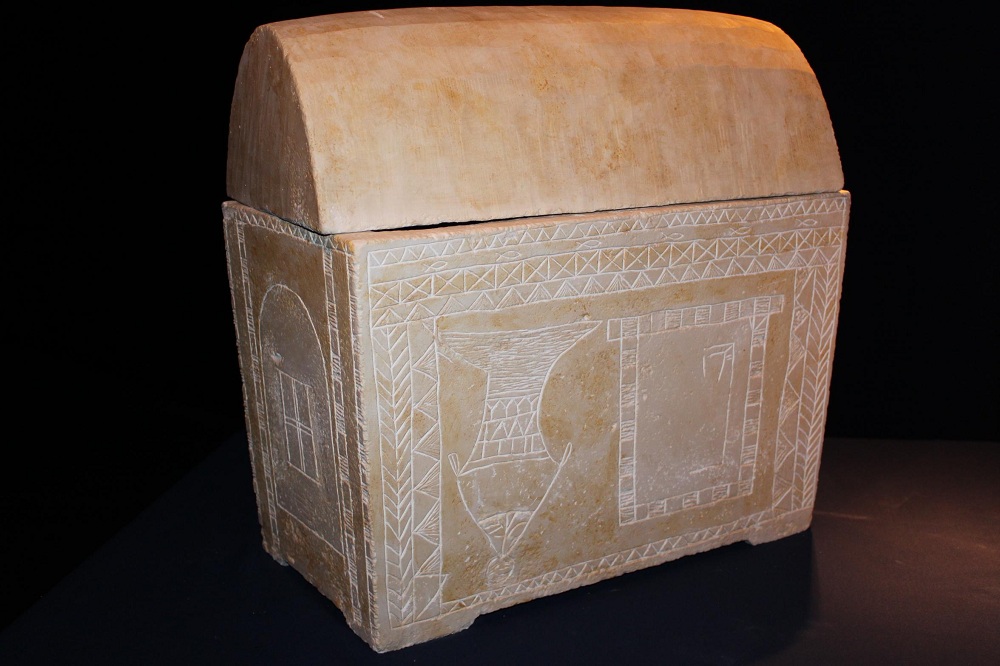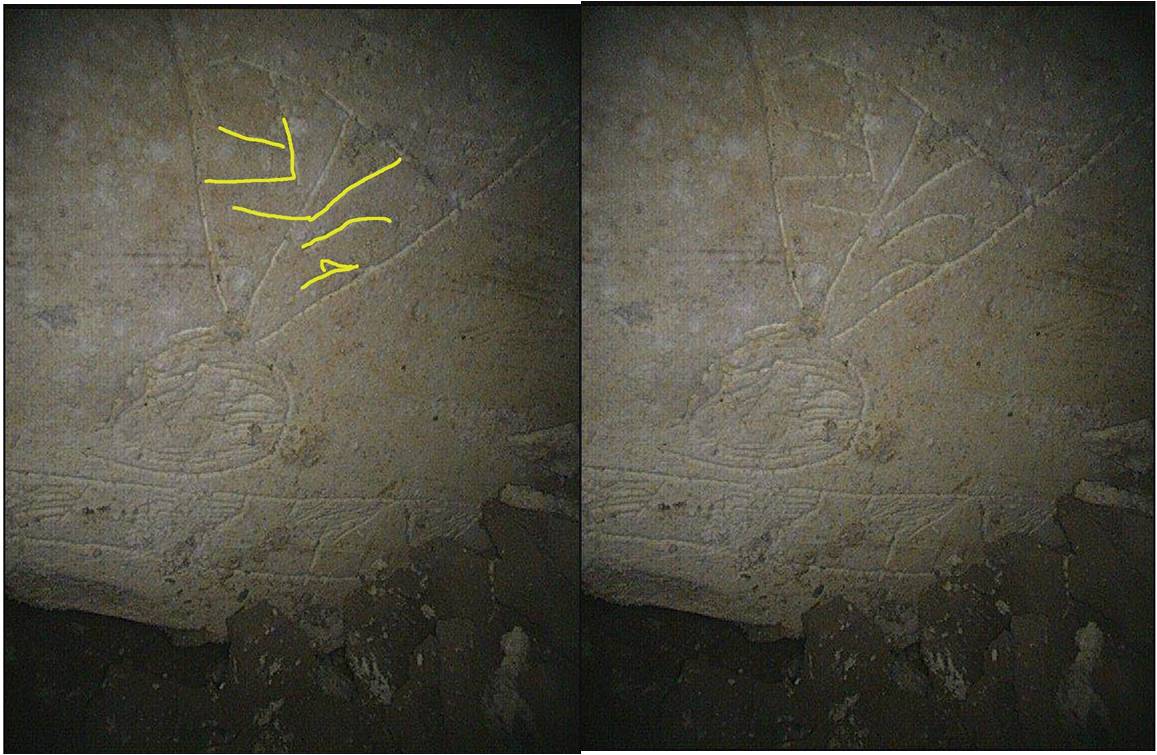Ancient 'Bone Box' Called Oldest Christian Artifact

Editor's Note: These claims have been addressed by outside scholars, who are skeptical of the findings. See their arguments here.
Long-unrecognized lettering confirms that first-century artifacts found within an ancient Jerusalem tomb are the earliest representations of Christianity ever found, researchers say.
Two Hebrew scholars who examined photographs showing the inside of the tomb agree that markings on an ossuary — a box made to hold human remains — are stylized letters that spell out the name of Jonah, the researchers said Thursday (April 19). Jonah was the Old Testament prophet whose story of being swallowed by a great fish was embraced by the early followers of Jesus.
The tomb, located 6.5 feet (2 meters) below an apartment building in the East Talpiot neighborhood of Jerusalem, was discovered in 1981 but resealed after Orthodox Jewish groups opposed its excavation. Two decades later, the group got license to enter the tomb, which has been dated to before A.D. 70.
Researchers led by James Tabor of the University of North Carolina at Charlotte did not enter the tomb themselves but instead used a remote camera to explore it. Their analysis of the images was reported Feb. 28 in the journal The Bible and Interpretation.
The Hebrew scholars' translation of the stylized letters on the ossuary have yet to be published.
Troubled tomb
Get the world’s most fascinating discoveries delivered straight to your inbox.
On one of the ossuaries was an inscription depicting "divine Jehovah," and a second had a picture that appeared to be a fish with a stick figure in its mouth, said to represent Jonah. If they fully understand these drawings, the researchers said, then they have found the oldest Christian artifacts, the earliest Christian art and the first evidence of faith in Jesus' resurrection. Similar depictions of Jonah were used by later Christian groups and became an important expression of the faith in later centuries.
When the tomb and its contents were first disclosed, many biblical scholars offered alternate interpretations of the iconography and disputed the tomb's connections to Christianity. They said the image is more likely a funerary monument and not a fish at all. [Religious Mysteries: 8 Alleged Relics of Jesus]
Hebrew hint
After the initial announcement, the team continued to examine the images from their robot scout. Strange markings inside the fish head stood out to the researchers, and they called upon James Charlesworth, a Hebrew script scholar from the Princeton Theological Seminary.
The researchers said Charlesworth confirmed their interpretation of the marks: The lines that make up what they thought was a stick figure could also be viewed as four Hebrew letters. The script is similar to that from the Dead Sea Scrolls and seems to spell out "YONAH," the Hebrew name of Jonah.
"This discovery by Professor Charlesworth is quite remarkable and had been overlooked in our initial analysis," Tabor said in a statement. "The engraver has apparently rather ingeniously combined what we took to be the stick figure of Jonah with the four Hebrew letters spelling out his name."
Tabor also asked other Hebrew researchers for their opinion on the interpretation. Robert Deutsch of Haifa University confirmed Charlesworth's reading of YONAH, and Haggai Misgav of Hebrew University agreed there were definitely letters, but Misgav read them as "ZOLAH," Tabor said.
Editor's Note: These claims have been addressed by outside scholars, who are skeptical of the findings. See their arguments here.
You can follow LiveScience staff writer Jennifer Welsh on Twitter, on Google+ or on Facebook. Follow LiveScience for the latest in science news and discoveries on Twitter and on Facebook.
Jennifer Welsh is a Connecticut-based science writer and editor and a regular contributor to Live Science. She also has several years of bench work in cancer research and anti-viral drug discovery under her belt. She has previously written for Science News, VerywellHealth, The Scientist, Discover Magazine, WIRED Science, and Business Insider.





